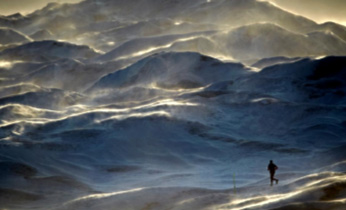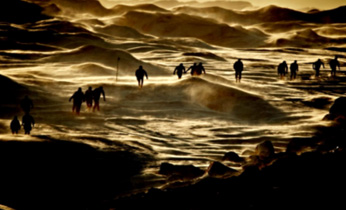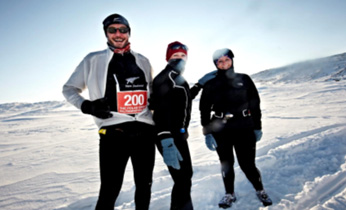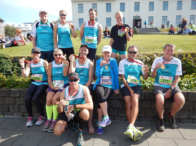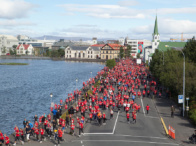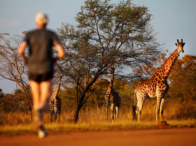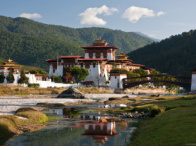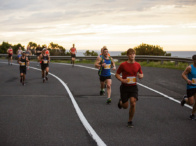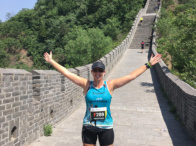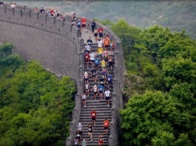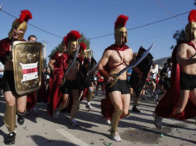THE COOLEST MARATHON ON EARTH
When we triumphed with our half marathon adventure at the Great Wall Half Marathon, we thought nothing could compare, or be as hard as that run. What could possible beat that? Well, Greenland, and The Polar Circle Marathon.
It was only as our Air Greenland flight approached Kangerlussuaq that we took a proper pause, looked at each other, and almost simultaneously said “what have we done”. We could see glaciers, the Ice Cap, vast white snow and precious little else. As born and bred Kiwis (Aucklanders to boot!), we had no real comprehension of what the cold in Greenland was actually like. We were about to find out, and we were scared. Hint: it’s not at all like our experience of Queenstown. Not even close. As we landed, the pilot’s usual briefing came over the PA: Welcome to Kangerlussuaq, currently slightly cloudy and -7 degrees.
Jeff Meltzer, Karen Mason and I completed and survived a half marathon race on October 22, 2011 known as “The Coolest Marathon on Earth”. It is run in the Arctic Circle on the edge of the ice sheet where enormous tongues of ice dominate the landscape. The race passes over endless snow and ice, over glacier tongues, frozen lakes, and the soundless arctic desert where musk oxen and reindeer live on the barren slopes. Part of the race takes place on the Ice Cap itself, but the main part of the course is run on the road that connects the inland ice with the small town of Kangerlussuaq, just north of the Polar Circle and three hours from the North Pole. Just 500 people (Inuit Indians) live in this airport town.
The day before the race we headed off to survey the course, and in particular, the Ice Cap so we could familiarise ourselves with this difficult and most challenging part of the run. The day was gloriously sunny, blue skies and a mild -8 degrees, with soft snow underfoot. We were shown the course flags and advised (several times) to keep to the right side of the flags “because you may fall into a crevasse if you venture to the left”. The warning registered cold fear and yet again we were given to “what have we done”! We were told that snow mobiles would go through on the morning of the run to hard pack the snow. It was a great opportunity to get an understanding of the clothing and footwear we would need for the run the next day. We were also told that this run is considered to be extreme, given the hilly terrain, underfoot surfaces and fluctuating temperatures, and to monitor our water intake as Greenland has very little moisture in the air. As a result, it could take 50% longer to run the course.
Race day dawned to reveal huge snow dumps overnight, no sun, no blue sky and a bracing temperature of -15 degrees. Not one thing similar to the preparation day! More thought was given to our clothing (because no, Queenstown never did get to -15), and we thank the brilliant Kiwi inventors of Icebreaker. We layered up with two of everything – tops, pants, socks and gloves, topped off with a woollen beanie, scarf and a windbreaker. We also put warming cream on our feet as we had experienced “ice rocks for toes” the day before.
There really are no words to describe the intense cold we experienced when we set off on the run at -15 degrees. But this was nothing compared to what awaited us on the Ice Cap. To get there, we traversed a ravine and were hit with a freezing polar blast that literally knocked me off my feet. We were knee deep in loose snow (too deep for snowmobiles!) with swirling snow flung at us from every direction. By the time we reached the Ice Cap it was -30 degrees, and mind numbing.
At the same time our sunglasses were icing over and had to be scraped clear. Of course there was the constant thought – keep to the right of the flags or disappear into oblivion! Sounds like a nightmare, or something from I Shouldn’t Be Alive?
It was, but at the same time the sight of the Ice Cap was absolutely beautiful and awe inspiring. Just the knowledge we were doing this incredible thing in Greenland was enough to keep us motivated. Once off the Ice Cap, into the protected hills (balmy at -15) was the mightily welcome van with hot drinks – almost impossible to drink with frozen lips! Our water bottles had frozen up, as had our energy gels, all no use whatsoever. Our finger tips were numb, I had frost bite on my cheek bones, but overall we were in pretty good shape to finish the last 15kms. We stopped periodically to just take in the magnificent scenery and deafening silence and to watch the chunky reindeer and musk oxen. I think we possibly had a grin under that frozen scarf for the entire run which we describe as “horrifically awesome”.
The 2011 run was the coldest in the event’s 10 year history, as well as the most extreme of conditions. With only 80 participants allowed each year, we count ourselves as the luckiest, craziest and hardiest of adventurers!
This is quite probably the hardest, most amazing thing we have ever done or are likely to do again. As we say, there is nothing like a bit of adventure before dementia, and who knows, maybe we will be tempted again, but probably not until this experience fades a bit.

